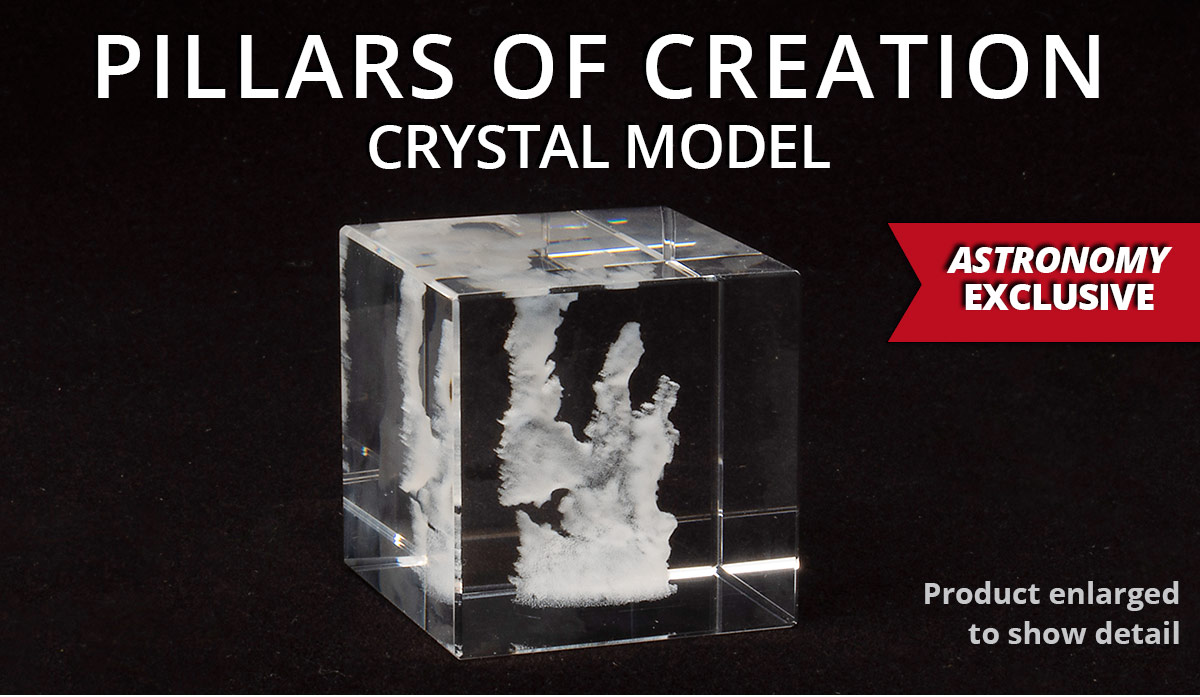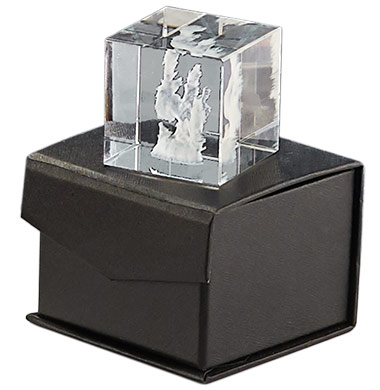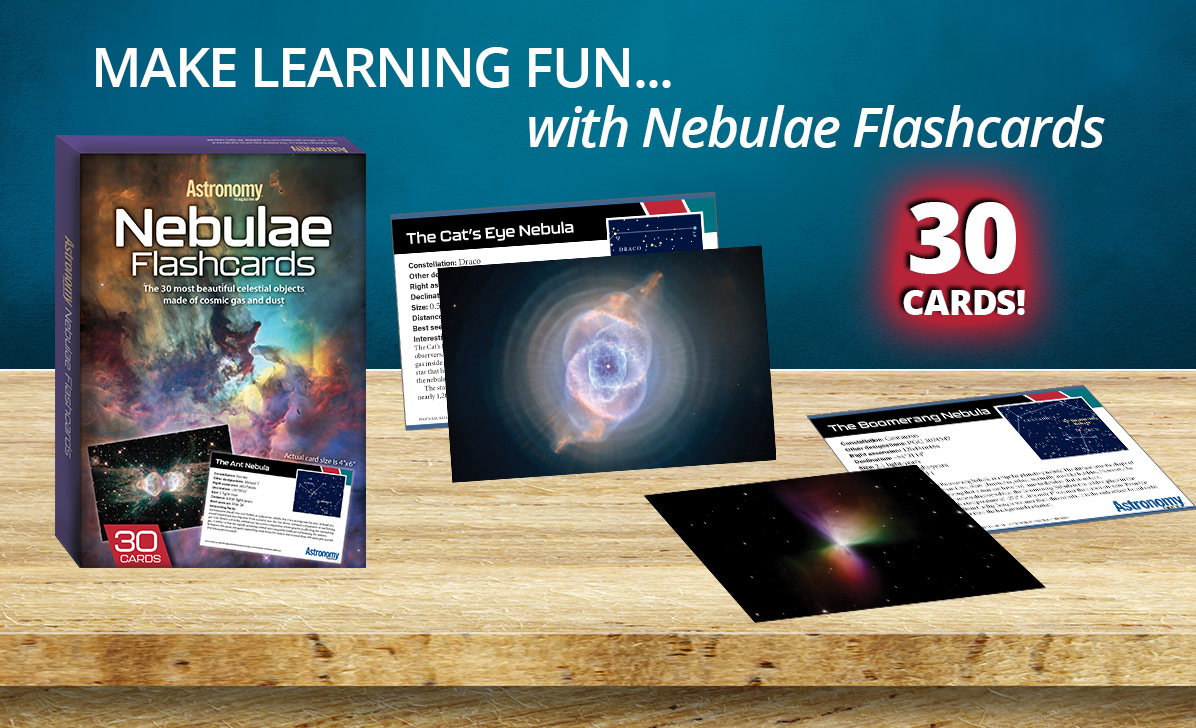March 29, 2024: Babies learn they can control the world, making alien ice in the lab, and an ancient device for reading the stars. —Andrea Gawrylewski, Chief Newsletter Editor | | | At some point during infancy, all humans discover that they can have an effect on the environment around them. To pinpoint the moment of discovery of "agency," researchers tracked the body movements of three- and four-month-olds. They tethered a hanging mobile to the babies' ankles and used an algorithm to calculate the frequency and speed of their foot kicks. The researchers discovered a distinct moment (what they call the "aha! moment") when most of the babies had dramatic bursts of foot kicks, followed by pauses and then more abrupt increases or decreases in foot speed.
What this means: The researchers hypothesize that they have captured the aha! moment when the babies realize they are controlling the movement of the mobile above them; they kick and see the mobile move, and then pause dramatically and realize the mobile is not moving without their movement.
What the experts say: Agency, it seems, arises organically in a dynamic "system" between the baby and its environment (the mobile). Rather than being a predetermined developmental step that all humans go through, "The experience of agency emerges only when an organism (the baby) senses it is coupled to its environment (in this case, the mobile setup)," write the study authors Aliza Sloan and Scott Kelso, researchers at Florida Atlantic University. | | | Ice crystals, like many crystalline structures, have an orderly lattice pattern of oxygen molecules. But the hydrogen atoms in the ice (the H in the H2O) are another story–they can be pointed any which way within the crystal. To make a new kind of ice, an "ordered" hydrogen version, which usually forms very slowly and under extreme pressure, researchers treated ice with small amounts of other chemicals to create gaps in the crystal lattice. These defects give hydrogen atoms more wiggle room to rearrange into ordered structures.
Why this matters: Ordered ice, with hydrogen atoms in uniform pattern, likely exists elsewhere in the universe, such as within the high-pressure hearts of gas giants and icy moons. Studying them in the lab could help researchers identify them out in the universe on alien planets.
Strange material: The chemists used a type of ice in their research called ice XIV, whose molecules form DNA-like double helices. Stranger still, a glacier made of ice XIV, or any ordered ice, wouldn't flow; instead it would shatter.
| | | • You've heard of dyslexia. But what about dyscalculia, the inability to process numeric information? | 6 min read | | | • Cargo ships, like the one that caused the Baltimore bridge to collapse, are getting dangerously big and threatening bridges, ports and other structures. | 5 min read | | | • In the latest Lost Women of Science podcast, learn how Elizabeth Carrington Morris and Margaretta Hare Morris, two natural scientists (and sisters), made significant contributions to botany and entomology, but were forgotten by history. | 27 min listen | | | • A rare 1,000-year-old Islamic astrolabe discovered in Verona, Italy, reveals how the instrument passed through different countries and helped Muslims, Jews and Christians tell time and read horoscopes. | 4 min read | | | The Verona astrolabe. Credit: Federica Gigante | | | A close-up of the Verona astrolabe shows Hebrew (top left) inscribed above Arabic inscriptions. Credit: Federica Gigante | | | • Between 1998 and 2017 landslides and mudslides affected nearly five million people worldwide and took the lives of more than 18,000, according to the World Health Organization. And yet tornadoes, volcanoes, wildfires and hurricanes get more headlines and more scientific research, writes Naomi Oreskes, historian of science at Harvard University. Climate change will ramp up landslide frequency and intensity in the coming years, and the need for better study of this phenomenon is pressing, she says. | 3 min read | | | OUR MOST-READ STORIES OF THE WEEK | | | • A Structural Engineer Explains Why the Baltimore Bridge Collapsed | 5 min read | • NASA's New Asteroid Sample Is Already Rewriting Solar System History | 9 min read | • Banning TikTok Would Do Basically Nothing to Protect Your Data | 5 min read | | | If you've ever watched the dramatic crocodile tears of a baby suddenly vanish when the child gets the object it desires, it will be no surprise to you that humans learn quite early in life how their behavior impacts others. In fact, babies are born with a sense of numbers, statistics and, at least by about 14 months old, a sense of empathy. They have far more connections between their neurons than do adults, the most useful of which life prunes and strengthens as they grow. | Thank you for strengthening neurons as a member of our science-loving community. Reach out any time with thoughts, ideas and suggestions: newsletters@sciam.com. See you Monday! | —Andrea Gawrylewski, Chief Newsletter Editor | | Subscribe to this and all of our newsletters . | | | | Scientific American
One New York Plaza, New York, NY, 10004 | | | | | | Support our mission, subscribe to Scientific American | | | | | | | | | |












